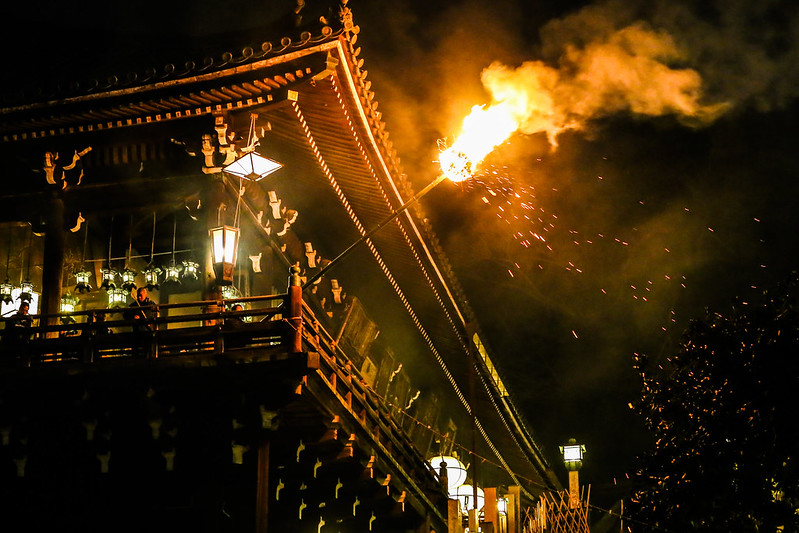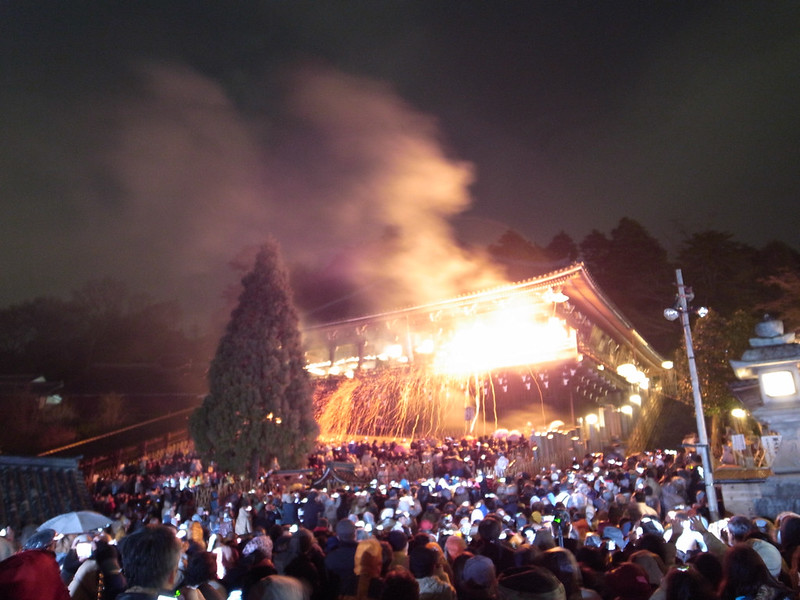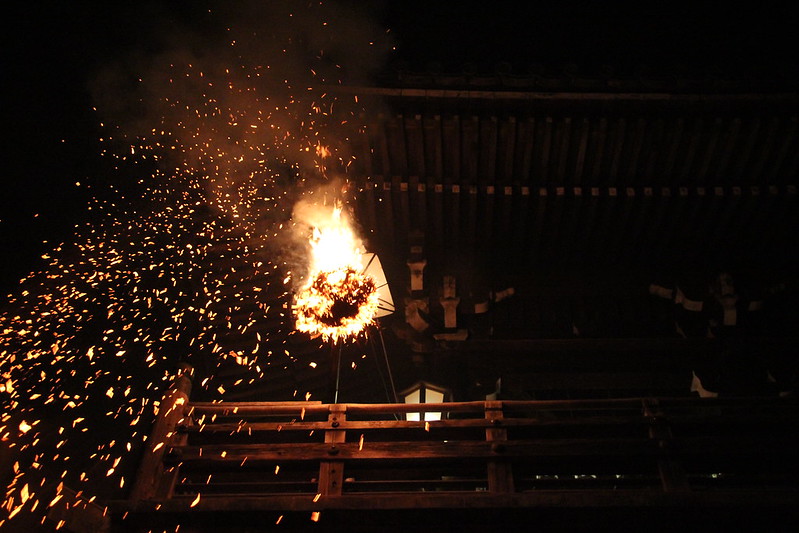Omizutori
A Fiery Ritual of Prayer and Spring at Nara’s Todaiji Temple
2026/02/28 - 2026/03/13
Every March, the ancient city of Nara is illuminated by the blazing torches of Nigatsudo Hall at Todaiji Temple. Omizutori, one of Japan’s oldest Buddhist rituals, has continued for over 1,250 years, marking the arrival of spring with the glow of fire, the chanting of monks, and the scent of cedar in the night air. Pilgrims, locals, and travelers gather to experience this extraordinary event, where fire, prayer, and hope for a new season can be felt with all five senses[1][2][3][4][5][6][8].
The festival is held annually from March 1st to 14th at Nigatsudo Hall, with the nightly Otaimatsu torch ceremony as its highlight. For those seeking to witness Buddhist tradition, historical atmosphere, and the mystical transition from winter to spring, Omizutori is an unmissable experience[2][3][4][5][6][8].
Main Attractions
Otaimatsu (Torch Ceremony)
The biggest highlight of Omizutori is the Otaimatsu. Monks dash across the Nigatsudo balcony carrying giant torches up to 8 meters long, showering the crowd below with fiery embers. The crackling of flames, the aroma of cedar, and the flickering firelight against the ancient wooden hall create a magical atmosphere. It is said that being showered by the embers brings good health and protection from misfortune[2][3][4][5][8].
Main Rituals & Events
Besides Otaimatsu, there are solemn Buddhist rituals with chanting and sutra recitation, as well as the midnight Omizutori water-drawing ceremony on March 12. Sacred water is drawn from the Wakasa Well, offered to the temple’s main deity, and shared with worshippers. Fire, water, and prayer come together in this event, wishing for purification and the arrival of spring[1][3][4][5][6][8].
Costumes and Decorations
Monks wear black or white robes, moving through the hall by torchlight. Nigatsudo is decorated with lanterns and banners, while the temple grounds are filled with the scent of incense and cedar, and the soft sound of prayers. The contrast of ancient wood and firelight is striking[2][3][4][8].
Traditional Food & Drink
Stalls along the approach offer yomogi mochi (mugwort rice cakes), yakimochi (grilled rice cakes), and amazake (sweet rice drink). The aroma of freshly roasted rice and sweet sake drifts on the night breeze, warming visitors as they watch the rituals[2][4].
Cultural and Historical Background
Omizutori (officially Shuni-e) began in 752 as a Buddhist repentance ritual, praying for peace, a good harvest, and the cleansing of sins. Drawing the sacred water is said to bring good health and happiness for the year. For the people of Nara, Omizutori is a symbol of hope and the start of spring, and is beloved throughout Japan[1][2][3][4][5][6][8].
Now designated as an Important Intangible Folk Cultural Asset, Omizutori continues to be handed down through generations, attracting countless worshippers and visitors[2][3][4][5][8].
Participant Voices
"I came from overseas to see this event. Feeling the cedar scent and being showered with sparks, I was overwhelmed by the energy of a tradition that’s lasted centuries. A local told me, ‘Omizutori marks the beginning of spring in Nara,’ and I truly felt the community’s spirit."
Fun Facts
- Omizutori has continued without interruption for over 1,250 years[1][2][3][4][5][6][8].
- The largest torches used in Otaimatsu are up to 8 meters long and weigh over 40 kg[2][3][4][5][8].
- It is believed that being showered by embers brings good luck and health[2][4][5][8].
- The sacred water drawn during Omizutori is called “Wakasa-i” and is believed to have healing powers[1][3][4][5][8].
Festival Dates
Omizutori is held every year from March 1 to 14 at Nigatsudo Hall, Todaiji Temple, Nara[2][3][4][5][6][8].
The event schedule is subject to change. Please check the official website for the most up-to-date information.
Information
| Name | Omizutori |
| Country | Japan |
| Area | Nara, Toudaiji Temple |
| Date | 2026/02/28 - 2026/03/13 |
| Link |
Upcoming Festivals
Whirling Dervishes Festival Turkey
A Mesmerizing Dance of Divine Love
2025/12/06Mevlana Celaleddin Rumi Commemoration Ceremony ( Şeb-i Arus ) Turkey
A Whirling Journey to Divine Love
2025/12/10Dia de la Virgen de Guadalupe Mexico
A Festival Weaving Faith, Fervor, and Mexican Identity
2025/12/11L'Escalade Switzerland
Geneva’s Grand Winter Festival of Courage, Chocolate, and Community
2025/12/12Umkhosi Wokweshwama South Africa
The Zulu First Fruits Festival—A Sacred Celebration of Land, Ancestors, and Renewal
2025/12/12Lucia Festival (St. Lucia's Day) Sweden
A Festival of Light Illuminating the Nordic Darkness
2025/12/15Las Posadas Mexico
The Luminous Quest for Sacred Shelter
2025/12/22Noche de Rabanos (Night of the Radishes) Mexico
A celebration blending art, farming heritage, and cultural traditions
2025/12/23Chant of the Sybil on Majorca Spain
A Medieval Prophecy Echoes Through Majorcan Christmas
2025/12/23‘Hatajo de Negritos’ and the ‘Hatajo de Pallitas’ Peru
A Christmas Festival of Rhythm, Faith, and Afro-Andean Heritage in Peru’s Ica Region


